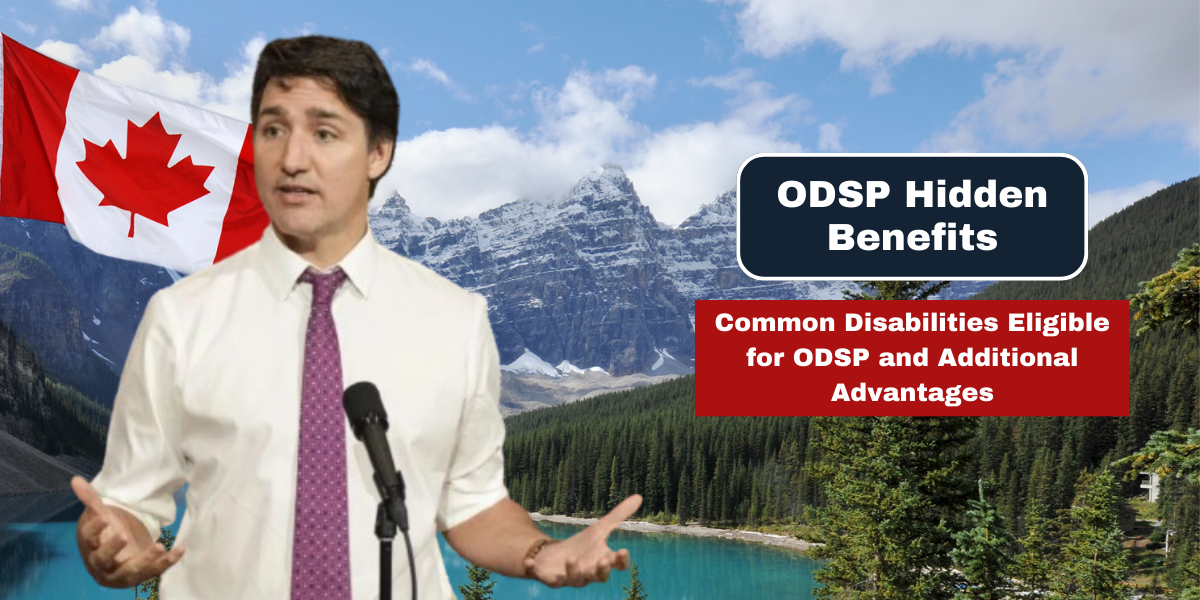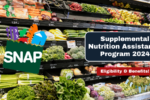Explore the ODSP Hidden Benefits, including common disabilities that qualify and additional perks you might not know about. Find out about the extra support and services available to help you maximize your Ontario Disability Support Program benefits. Stay informed to fully understand and utilize your entitlements.
Please note that determining eligibility for ODSP involves a detailed assessment by qualified professionals. Only for the aim of providing general knowledge and information, the information that is presented here is offered.
Table of Contents
What is ODSP?
Administered by the Ministry of Children, Community, and Social Services, the Ontario Disability Support Program (ODSP) provides income and employment support to eligible residents of Ontario with disabilities. ODSP income support helps cover essential living expenses, including food, housing, and health benefits such as drug and dental coverage. The program is intended as a last resort, so you should seek income from other sources (e.g., employment, Canada Pension Plan Disability benefits, Workplace Safety and Insurance Board) before applying for ODSP financial assistance.
| Ira Contribution Limit 2024 |
| 1400 Checks And 300 Weekly Payments |
| Disability Benefits Arrival Dates |
| Social Security Disability Benefits Pay Chart 2024 |
| Australia Minimum Pension |
Who is eligible for ODSP income support?
If you meet the following criteria, you could be eligible for ODSP income support:
- Reside in Ontario
- Are 18 years of age or older
- Are experiencing financial need
- Meet the criteria for a disability as outlined in the ODSP Act
If you are under 18, you can start the application process up to six months before your 18th birthday.
Definition of a person with a disability
Under the ODSP Act, a person with a disability is defined as someone who has a significant and ongoing physical or mental impairment expected to last a year or longer. This impairment must limit the person’s ability to work, care for themselves, and engage in community activities.
The disability must also be confirmed by an approved healthcare professional. Your caseworker will have both you and your healthcare provider complete a Disability Determination Package. This package will be reviewed by specialized ministry staff to determine if you meet ODSP’s criteria for a disability.
Common Disabilities Qualifying for ODSP
Although the definition of disability is broad, some common conditions that may qualify individuals for ODSP include:
- Physical Disabilities: Amputations, spinal cord injuries, multiple sclerosis, muscular dystrophy, arthritis, chronic pain, and mobility impairments.
- Mental Health Conditions: This includes but is not limited to depression, anxiety, schizophrenia, bipolar disorder, and other severe mental diseases.
- Developmental Disabilities: Intellectual disabilities, autism spectrum disorder, and cerebral palsy.
- Sensory Disabilities: Blindness, low vision, deafness, and hearing impairments.
- Chronic Illnesses: Long-term health issues such as chronic fatigue syndrome, fibromyalgia, and others in addition to these.
It’s important to understand that having a disability alone does not automatically qualify you for ODSP. Eligibility also depends on factors such as income and assets.
How much can I get from ODSP?
As of the year 2023, if you are a single person and meet the requirements for the ODSP, you will be eligible to receive $1,308 a month to assist you with your living costs. The amount varies based on factors such as family size, living costs, and individual circumstances. While there is no planned increase for 2024, rates were last adjusted in July 2023 with a 6.5% increase.
Monthly payments are divided into two components: basic needs and shelter allowance.
Basic needs
The basic needs portion of your monthly ODSP payment is intended to cover food, clothing, and personal items such as toiletries.
Refer to this table to find out the amount you can receive for basic needs based on your specific situation.
Shelter allowance
All of the following are covered by the shelter allowance element of your monthly ODSP payment:
- Rent or mortgage payments
- Utilities and heating costs
- Property taxes
- Home insurance
Here’s the amount you can receive from the shelter allowance based on your specific situation.
| Family size | Maximum monthly shelter allowance |
| 1 | $556 |
| 2 | $875 |
| 3 | $947 |
| 4 | $1,027 |
| 5 | $1,109 |
| 6+ | $1,149 |
What are the ODSP payment dates for 2023?
Every month, on the final business day of the month, ODSP payments are then distributed. The most convenient way to receive your payments is through direct bank deposit. Alternatively, you can choose to receive a cheque or use a reloadable payment card if you don’t have a bank account.
Here is a list of the ODSP payment dates for the year 2024:
| Month | Payment Date |
|---|---|
| January | January 31, 2024 |
| February | February 29, 2024 |
| March | March 28, 2024 |
| April | April 30, 2024 |
| May | May 31, 2024 |
| June | June 28, 2024 |
| July | July 31, 2024 |
| August | August 30, 2024 |
| September | September 27, 2024 |
| October | October 31, 2024 |
| November | November 29, 2024 |
How to Claim ODSP
To apply for ODSP (Ontario Disability Support Program), you need to submit an application to the Ontario Ministry of Children, Community and Social Services.
Here’s a general overview of the process:
- Gather Necessary Documents: Collect proof of identity, income, residency, and medical documentation that supports your disability.
- Complete the Application Form: Obtain the application form online, by mail, or in person at an ODSP office.
- Submit Your Application: You can submit your completed application online, by mail, or in person.
Important: Processing times for ODSP applications can vary. Providing complete and accurate information will help expedite the process.
Additional Advantages for ODSP Applicants
ODSP recipients may be eligible for additional benefits to address specific needs related to their disability, including:
- Assistive Devices: Coverage for items such as wheelchairs, hearing aids, and mobility aids.
- Prescription Drugs: The Ontario Drug Benefit (ODB) program provides coverage for the patient.
- Dental Care: Adults may get fundamental dental care, while children under the age of 18 can receive complete coverage.
- Vision Care: Coverage for eye exams and glasses.
- Transportation: Assistance with transportation costs in certain situations.
- Other Supports: Additional support may be available based on individual needs.
To determine your eligibility for ODSP and any extra benefits, it is essential to contact the ODSP office and provide the necessary documentation.
Conclusion
Navigating ODSP can be complex, but understanding the benefits and application process can make a significant difference. By gathering the required documents, completing the application accurately, and exploring additional benefits like assistive devices and dental care, you can ensure you receive the support you need. For personalized assistance and to verify your eligibility for both ODSP and any extra benefits, it’s important to stay in touch with the ODSP office. Accurate and timely information will help streamline your application and access the resources available to you.
FAQs
How can I check the status of my ODSP application?
Contact your ODSP caseworker or the ODSP office directly to inquire about your application status.
What should I do if I have a change in my financial situation?
Report any changes in your financial situation to your ODSP caseworker as soon as possible to ensure your benefits are adjusted accordingly.






